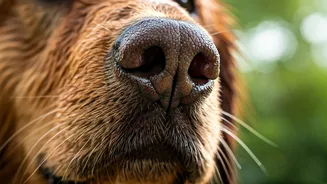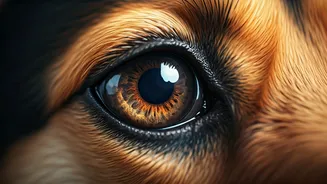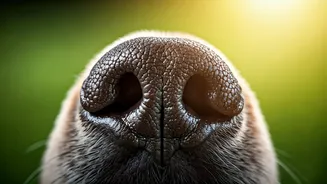Smell: A Superpower
Dogs possess an incredible sense of smell, often cited as their most dominant sense. Their olfactory capabilities are significantly advanced compared to humans.
The area of a dog's brain dedicated to processing smells is far larger than ours. They have an estimated 100,000 to 1 million times more olfactory receptors than humans. This exceptional ability allows them to detect faint odors that we cannot perceive, making them invaluable in various applications, such as search and rescue, detecting diseases, and tracking criminals. Their ability to differentiate between smells and identify scents individually is also far superior to our own. This sense is vital to their survival and understanding of their surroundings, enabling them to identify potential threats, locate food, and communicate with other dogs. Research continues to uncover more about how dogs use their sense of smell, revealing the intricate processes at play and its essential role in their lives.
Hearing: A Keen Ear
Dogs also have an acute sense of hearing, capable of perceiving sounds far beyond the range of human hearing. They can hear frequencies up to 45–50 kHz, while humans can only hear up to about 20 kHz. Moreover, they can detect sounds from a much greater distance than humans can, sometimes up to four times further away. The structure of a dog's ear, with its ability to rotate and swivel, contributes to this enhanced hearing. They can pinpoint the location of a sound source much more accurately than humans. This directional hearing helps them identify and react to sounds swiftly, whether it is a potential threat or the sound of their owner. This heightened auditory perception is not only essential for their safety but also enables them to understand verbal cues, making them highly trainable and responsive to commands. Their hearing enables them to discern the subtle nuances in human speech and body language, contributing to their ability to form strong bonds with humans.
Vision: The Canine View
While not as sharp as their sense of smell or hearing, dogs' vision has unique characteristics. They see in shades of blue and yellow, lacking the ability to perceive the red spectrum like humans. Their visual field is wider than ours due to the position of their eyes on the sides of their heads, providing them with a broader view of their surroundings. Dogs have better motion detection compared to humans, which means they are adept at noticing movement, which would have aided them in hunting. They have a tapetum lucidum, a reflective layer behind their retinas, that enhances their night vision, making them capable of seeing in low-light conditions. Their vision capabilities reflect their evolutionary adaptations, allowing them to navigate effectively in various environments and react quickly to moving objects.
Touch: Sensory Experience
Dogs also possess a heightened sense of touch, providing essential information about their environment and helping them to interact with the world. They have specialized receptors in their skin that detect pressure, temperature, and pain. These sensory receptors are particularly concentrated in areas such as their paws, nose, and whiskers. Whiskers, for example, act as sensory tools, helping dogs navigate in tight spaces and detect changes in air currents. Their sense of touch aids them in social interactions, allowing them to assess the emotional state of other dogs and humans through physical contact. The tactile experience helps them to understand their surroundings and to form strong emotional bonds. Touch plays a vital role in their overall well-being and helps them to experience their environment in a comprehensive way.






